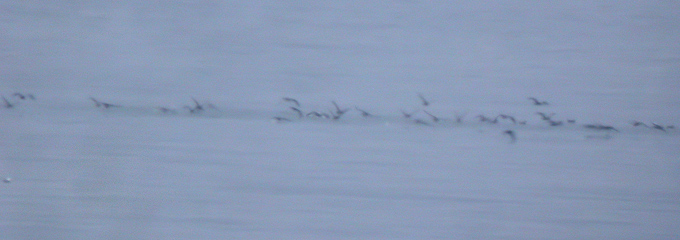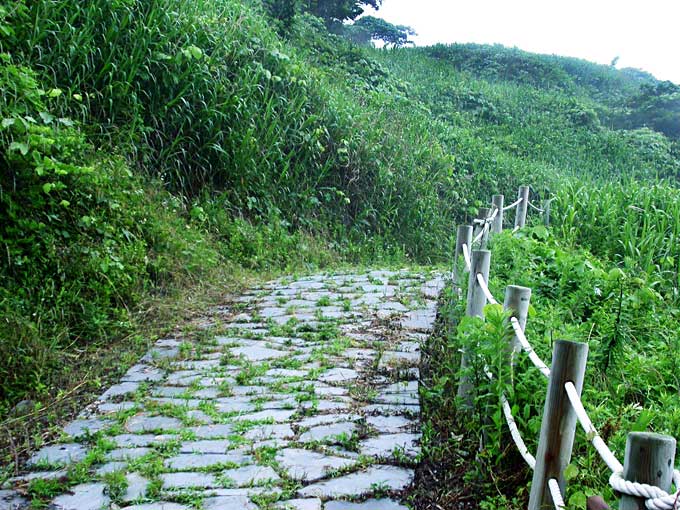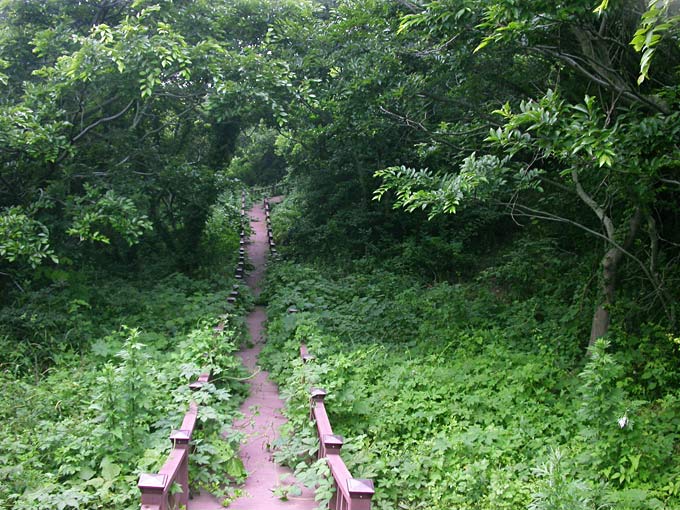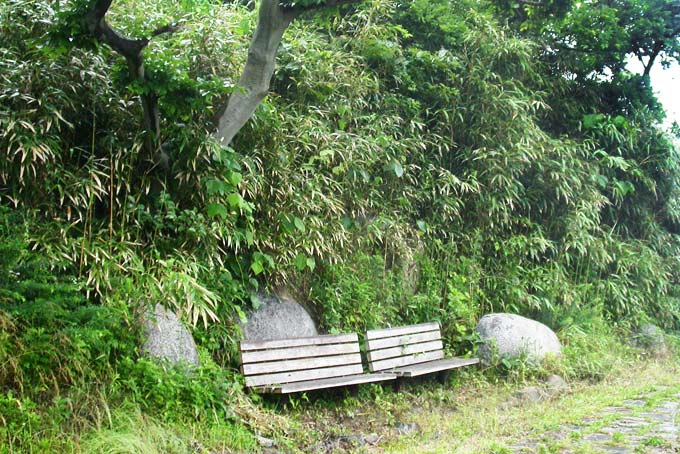 | E-mail to Birds Korea |
 | KWBS |
in the Region
 | The Oriental Bird Club |
 | BirdLife International (Asia) |
July
Hot (typically maxima above 25°C, and sometimes reaching 34°C) and humid, with occasional storms and heavy rains associated with southern-tracking typhoons.
Young Japanese and White Wagtails can be found begging food on streams and rivers in the East and southeast. Juvenile Chinese Egrets and Eastern Oystercatchers are on north-west tidal-flats, in some areas feeding alongside summering Saunders’s and Mongolian Gulls. Chinese Sparrowhawks are on telegraph poles in rice-fields throughout the country. Black-naped Orioles, Vinous-throated Parrotbills and parties of tits, are found in almost all woodland areas. By the end of July the first returning shorebirds arrive, with large numbers of Far Eastern and Eurasian Curlews at Ganghwa and the Geum Estuary.
“Southern breeders” in recent years have included Pheasant-tailed Jacana, White-breasted Waterhen and Greater Painted Snipe. In 2006 an early typhoon brought Korea’s first Bridled Tern, to Jeju island.
(The following records are a compilation of our own sightings and records sent in by other observers. As well as being posted on the Birds Korea website(s), selected records are also forwarded to other Korean-language birding websites; records of threatened species are arranged and forwarded to Birdlife International and national authorities when appropriate; flag images and records are passed to bodies responsible for their coordination throughout the flyway; and all records sent to us are used to compile annual reports and to support the evolving understanding of the status of many of Korea’s birds.)
Imshil, Jeollabukdo, July 23 & 24
The excellent woodlands to the south of Imshil seemed like a bird nursery when the rain let up and I could explore them. First I saw a pair of juvenile Grey-headed Woodpweckers winkling insects out of pine boughs, watched by an adult. Nearby a brood of young Ring-necked Pheasants scuttled into the undergrowth when their feckless (?) mother flew off as I approached. A newly-fledged Coal Tit approached so close I had to step back to focus; I was clearly its first human contact. Then two very young Eurasian Nuthatches practised caterpillar-tossing skills under the severe gaze of their parents. In the end they realised they were supposed to eat them. A male Yellow-throated Bunting was also spotted, together with a juvenile Pale Thrush and Eastern Great Tit). A low-key but very agile Brown Dipper climbed through the water on an almost vertical waterfall cliff in the forest park, then rested and slowly regained its paler colour as it dried out by the stream. It seemed to have a white eye membrane which it frequently blinked when resting, maybe for cleaning. I saw several female Mandarin Ducks on small rivers in groups of two or three. The fungi and butterflies were splendid too, including a fine Chinese Peacock Papilio bianorwhich fed slowly for several minutes.
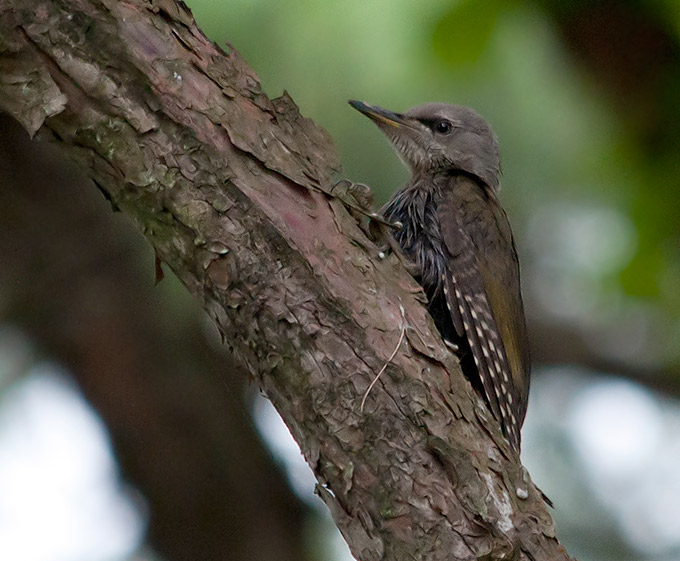
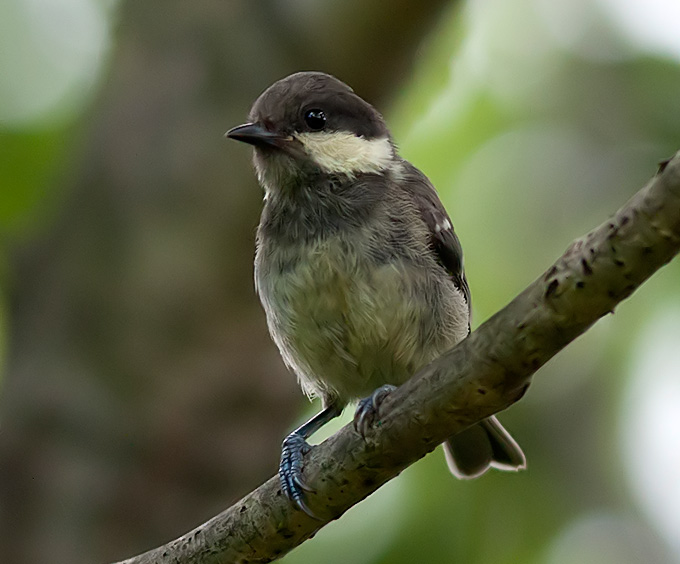
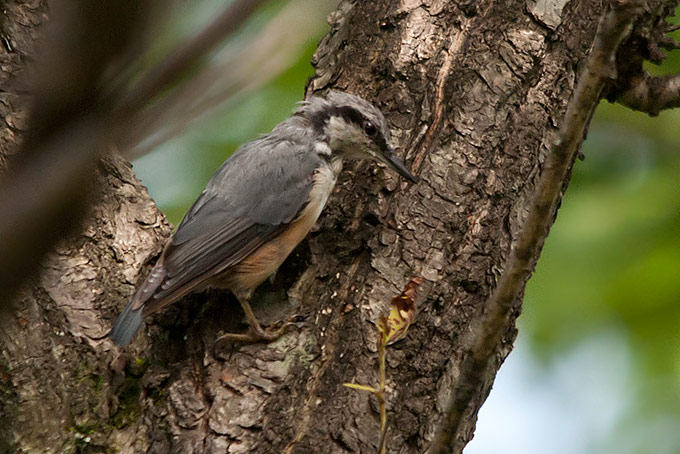
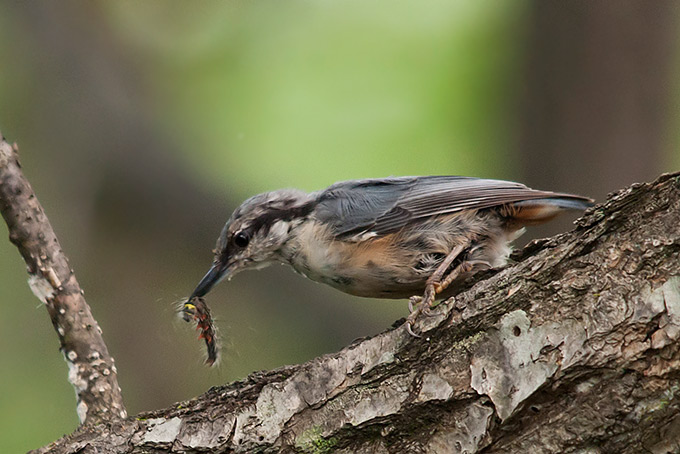
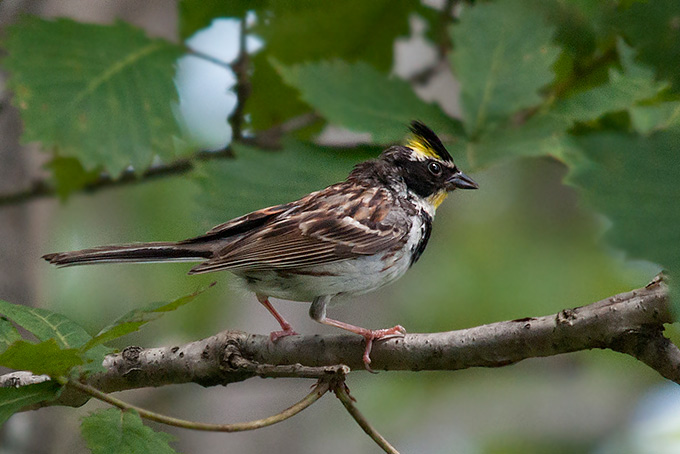
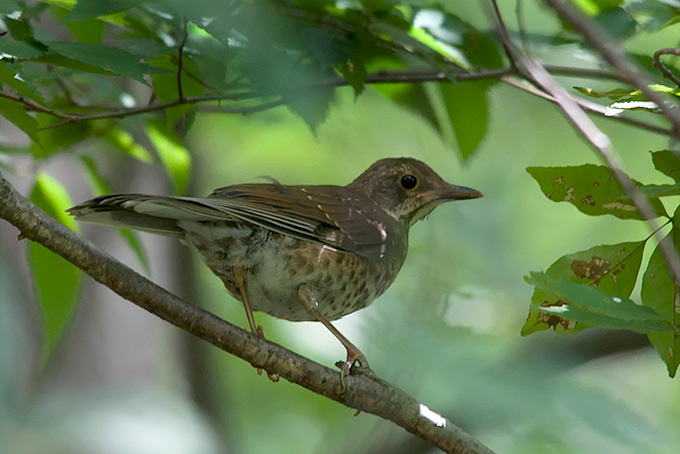
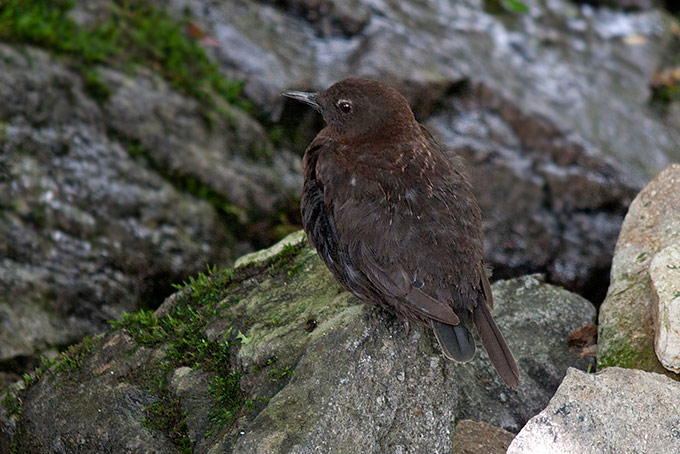
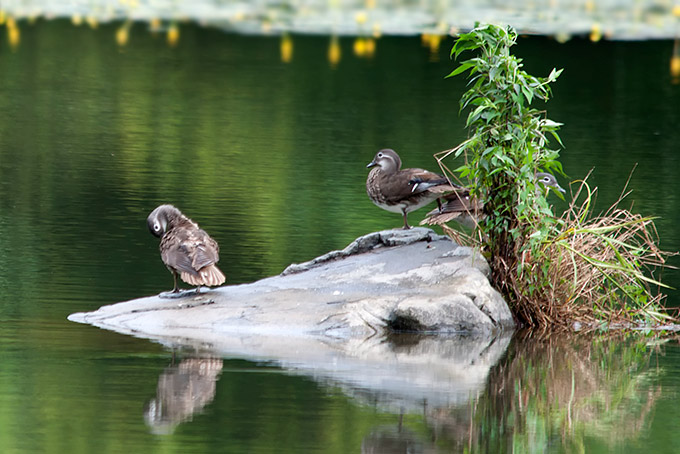
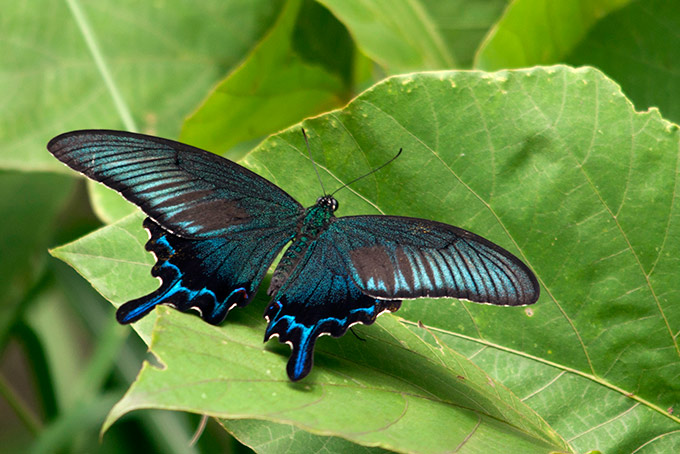
Nakdong Estuary, July 22
In stifling heat (>30C with high humidity) and thanks to Mr. Jeon Shi-Jin, a search for Styan’s Grasshopper Warbler on one of the estuary’s islands where one was heard singing several years ago. With the usual bamboo replaced by reed, still four or five territories were found. Sharing the same habitat were several Oriental Reed Warbler and Far Eastern Cisticola, both food-carrying or with juveniles in territory. Also present a Western Osprey and two very tatty adult Black Kite. In addition, increasing signs of southward migration, with ca 45 Eurasian and 10 Far Eastern Curlews, two Whimbrel, three Bar-tailed Godwit including at least one baueri and one menzbieri, six Grey-tailed Tattler, two Terek Sandpiper and a Ruddy Turnstone.
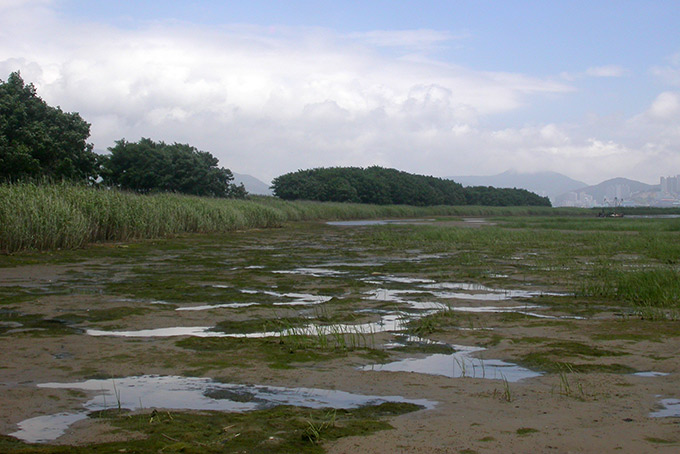
Aham-do, July 20
In sweltering humidity and a rare break from torrential rains, a quick visit to the remnant strip of tidal mud found e.g. 2 Black-faced Spoonbill, 25 adult and 16 fledgling Saunders's Gull, and 7 Far Eastern Oystercatcher.
Juvenile Saunders's Gulls are learning how to find food. Some are already quite independent, while others stand around eliciting parental handouts with constant thin begging whistles. The adults are looking very tired and tatty now, and losing their black hoods. They appear to be feeding on the teeming crabs, as well as also possibly the Mudskipper Periopthalmus modesta- which is quite the oddest and most charismatic little creature on the mud.
Also cooling off by the water today, a moulting Mongolian Gull, 4 Common Greenshank, and 2 Little Tern. The latter are usually abundant here- I hope their colony is still safe from the bulldozers.
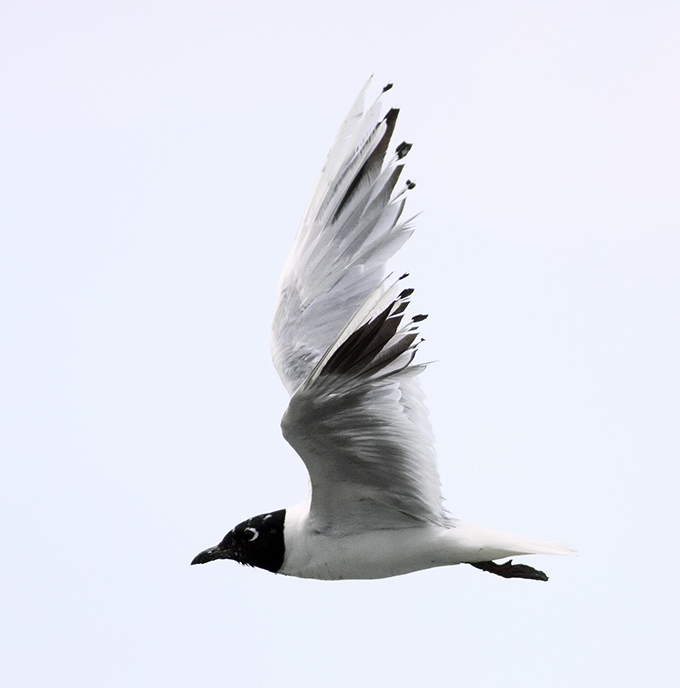
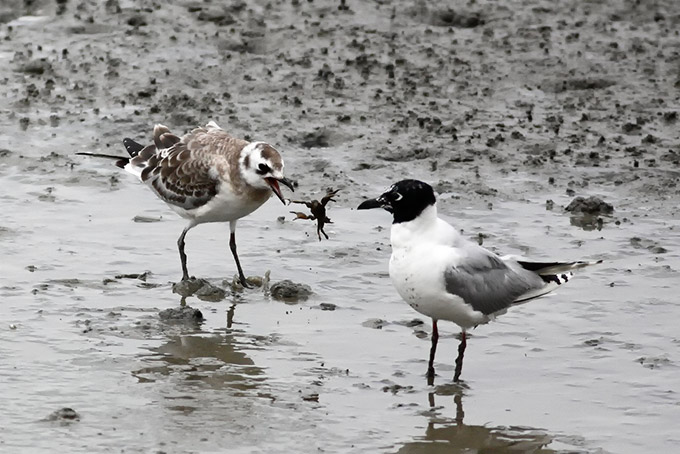
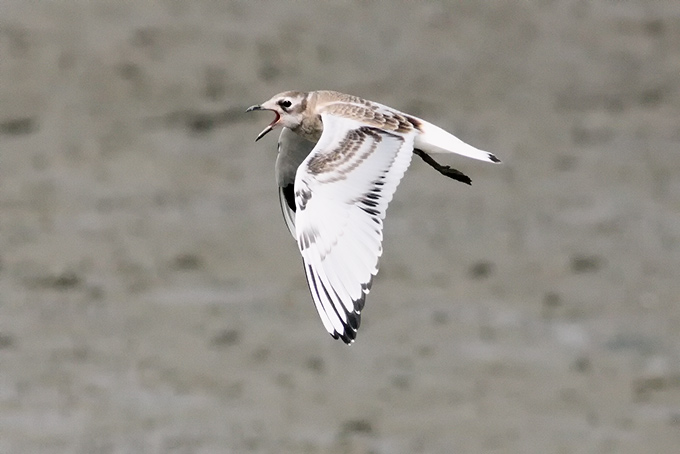
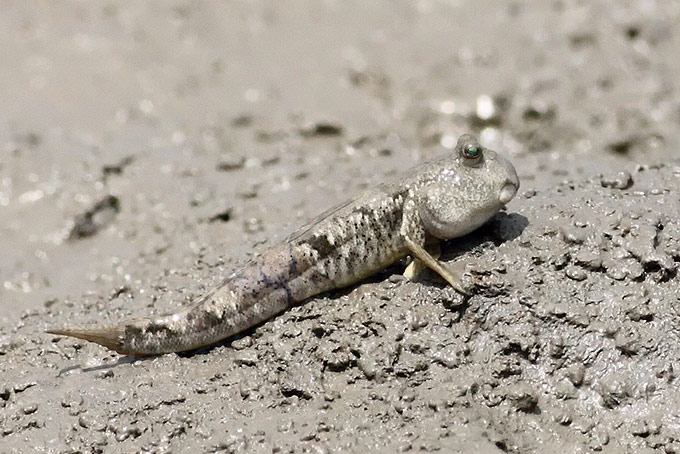
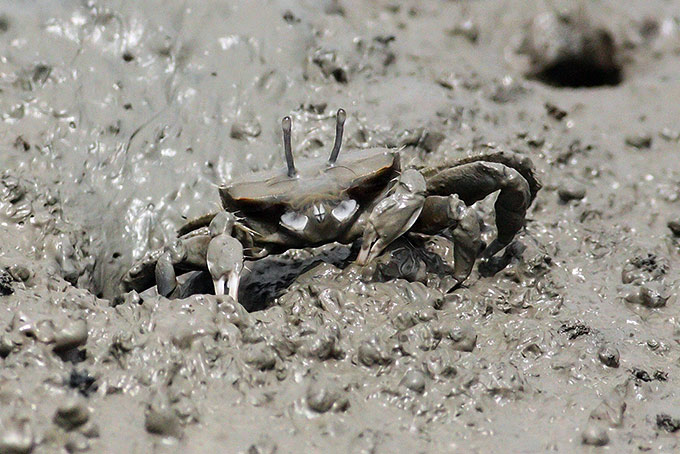
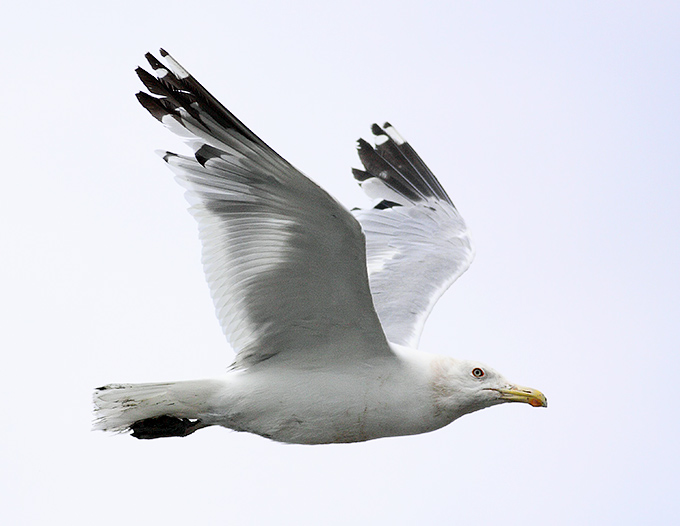
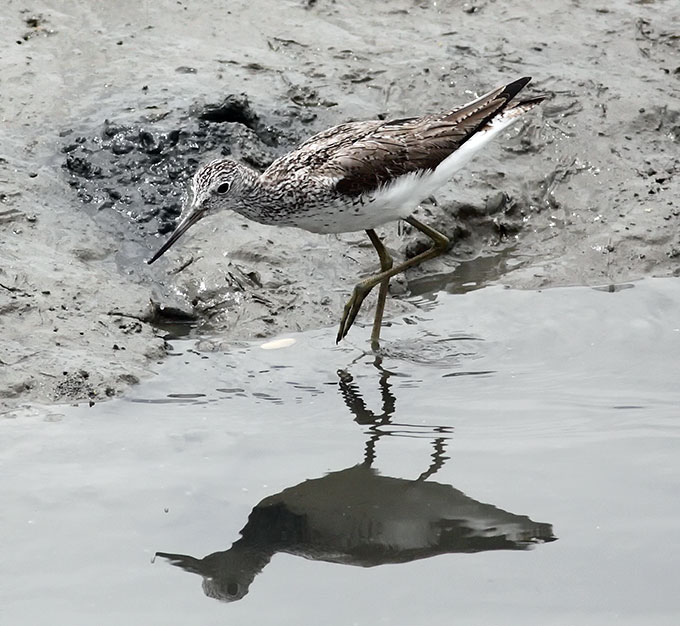
East Gangwon Province x wetlands and forest, July 14
As usual in summer, the number of birds I see is lower than I usually see during other seasons. There have been some interesting birds around just the same. I went to Namdae Cheon on July 10 to do a bird survey. There were plenty of Black-tailed Gulls resting on the sandbar near the mouth of the creek, and some Grey Herons. Along the road, the cherry trees still had ripe fruit attracting White-cheeked Starlings. I flushed one from a tree walking along the roadside. It flew down to a bush beside the river. It had prominant white shoulder patches, easily seen in flight and when it was perched. Unfortunately, I didn't realise soon enough that it was a vagrant White-shouldered Starling and didn't immediately attempt to get a photo because it was a bit too far away and had the Sun behind it from where I was. I tried to get in a better position but wasn't able to find it again. I did find over 100 White-cheeked Starlings that flew in sychronised flight, especially when a Common Kestrel flew over. Before I got back to Yangyang I found a flock of Grey-capped Greenfinches feeding on Coreopsis lanceolata seeds. The seeds of this yellow flower seem to be a prferred food for greenfinches when the rains come in summer.
There have been several species breeding along Nam Cheon near Ganseong. There has been numerous broods of Spot-billed Ducks, one of Mandarin Ducks, Little Grebes have 4 chicks out of the nest, Siberian Stonechats have fledglings, and Black-billed Magpies have too. I saw an immature Striated Heron one day as well. Japanese Wagtails and White Wagtails have fledglings. Oriental Reed Warblers are almost certainly breeding along Nam Cheon. I think Grey Herons and Eastern Great Egrets will soon have fledglings around too, if they haven't already. Their breeding site near Ganseong still has plenty of activity. Barn Swallows have nests around town, and Common Ketrels have a fledgling too.
I've been seeing a few waders around Ganseong too. Little Ringed Plovers, Long-billed Plovers, Kentish Plovers and Common Sandpipers have all been seen with chicks out of the nest. Since the end of June I've seen 2 Terek Sandpipers, 2 Mongolian (Lesser Sand) Plovers, a Common Greenshank, Green Sandpipers and 2 Red-necked Stints. Most of them have been around te sandbar at the mouth of Nam Cheon. The male Pochard is still around.
On the west side of Ganseong Eup there have been some interesting birds as well. When the rain stop last Sunday, July 11, I went for a walk towards Mount Goseong in the valley. I could hear but couldn't see a couple of Korean Bush Warblers. Bull-headed Shrikes had young out of the nest. There was a Chinese Sparrowhawk on one of the elctricity poles in the rice fields. From my new apartment I have been hearing a Little Cuckoo calling in the same area as well.
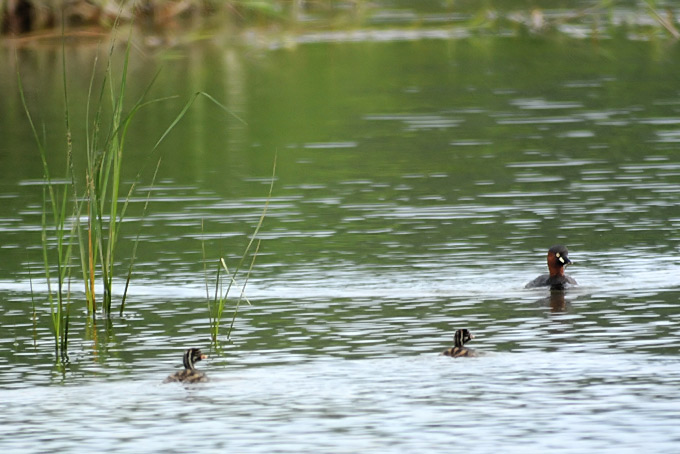
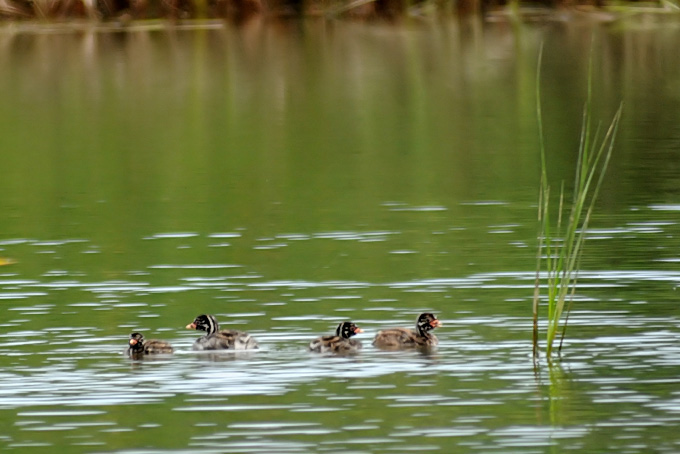
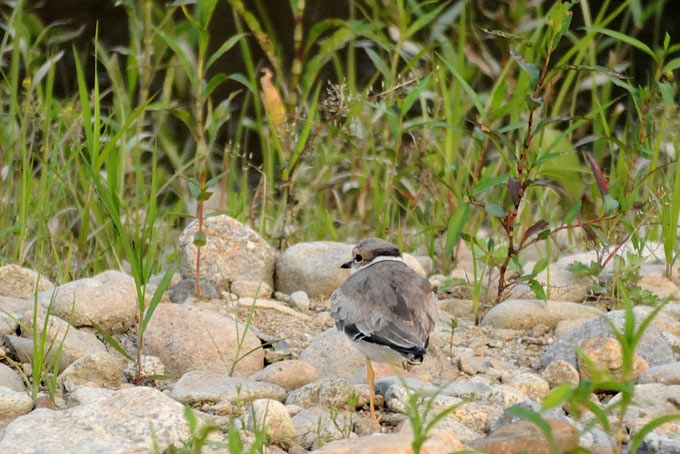
Hatei Island (Shinan County), July 7-10
Several days of Styan's Grasshopper Warbler / Blueprint survey in sweltering humidity of this peaceful, friendly and attractive island found a total of 28 species. Most numerous species was Styan's Grasshopper Warbler (double-checking of GPS coordinates still to do, but probably 41 or 42 territories identified), followed by Japanese Bush Warbler (probably ca 25 territories), Brown-eared Bulbul (ca 25 individuals), Eastern Great Tit (several family parties), Pacific Swift (maximum of 25 on 9th), Blue Rock Thrush (ca 20, including many juveniles) and Japanese White-eye (ca 15). There was also increasing evidence of post-breeding dispersal southward migration already, with e.g. a Chinese Egret on 7th, a Black-tailed Gull (on 10th), and singles of Wood and Common Sandpipers and Little Ringed Plover (last on 10th), along with a small White-cheeked Starling flock (maximum of 9) and a single Grey Wagtail.
In addition to the Styan's, further highlights came with a possibly summer-resident Pacific Reef Heron, a Black Woodpigeon heard crooning very briefly (on 8th: though said to have been seen also a month ago), and by far the least expected, a Gray's Grasshopper Warbler recorded giving a single song-phrase.
While the ferry journey back between Hatei and the mainland was extremely poor, the stretch ouward of sea on 10th between Hatei-Manjay-Gageo-Hatei yielded 20 Swinhoe's Storm Petrel (a miniscule fraction of the huge number said to be breeding on the Gukeul islets off Gageo) and three Ancient Murrelet, along with a dozen or so Streaked Shearwater.
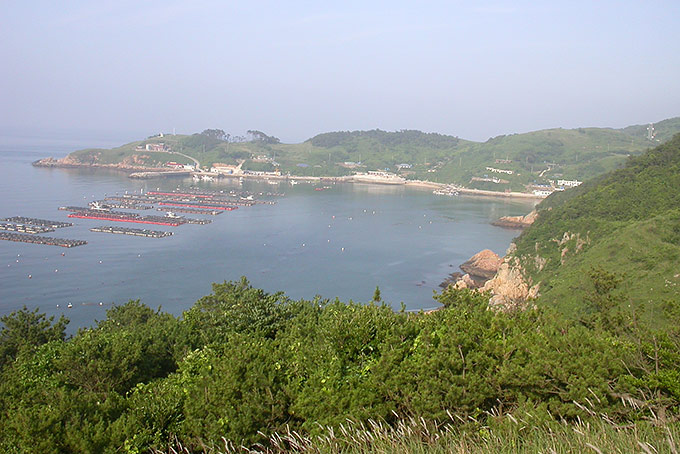
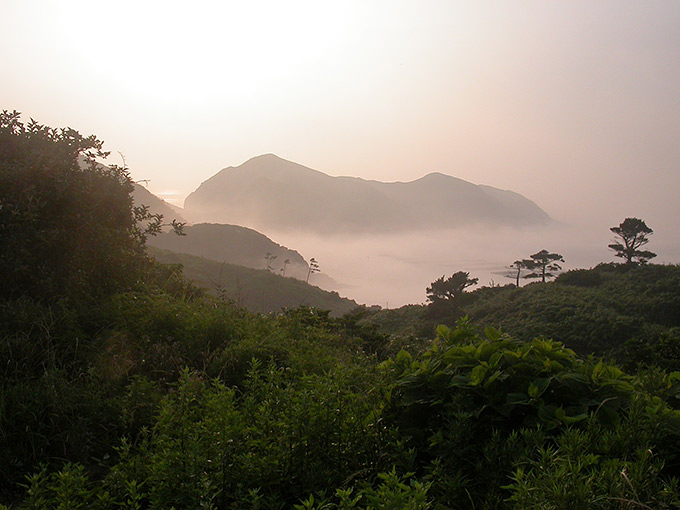
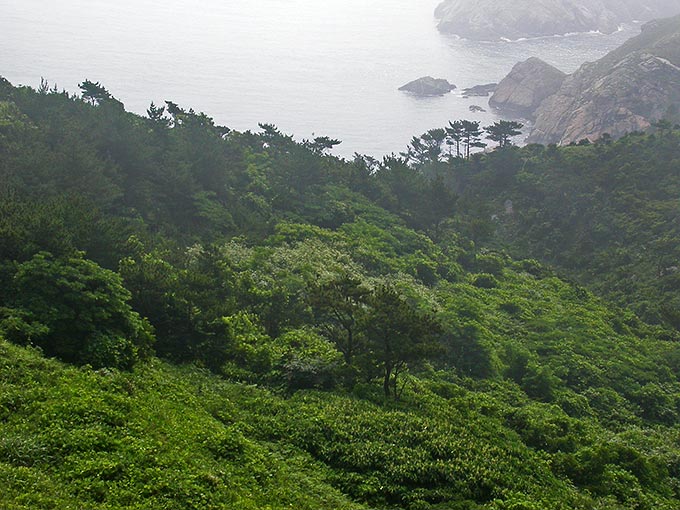
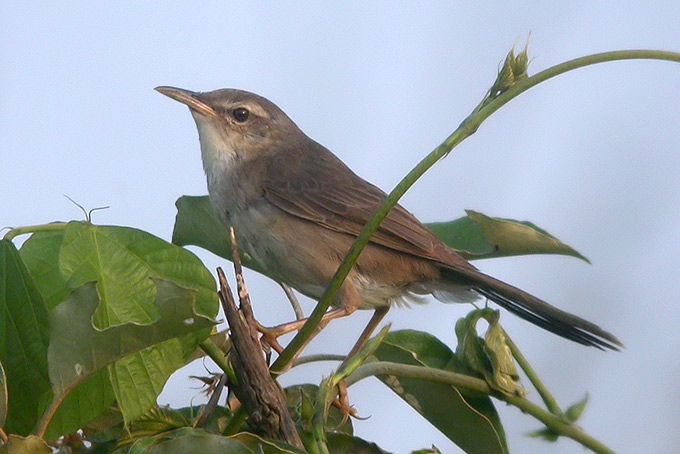
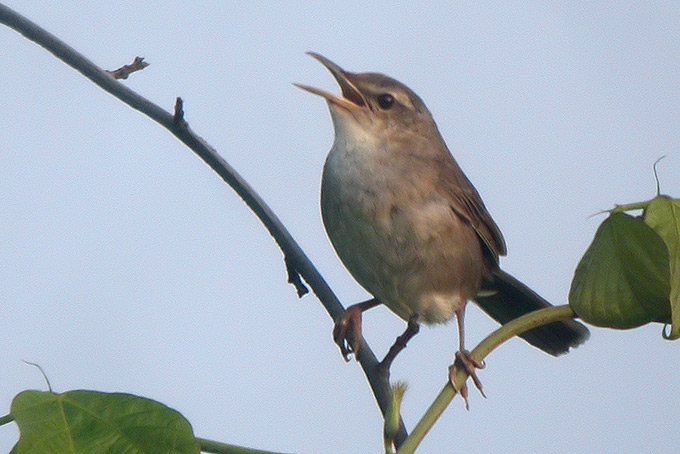
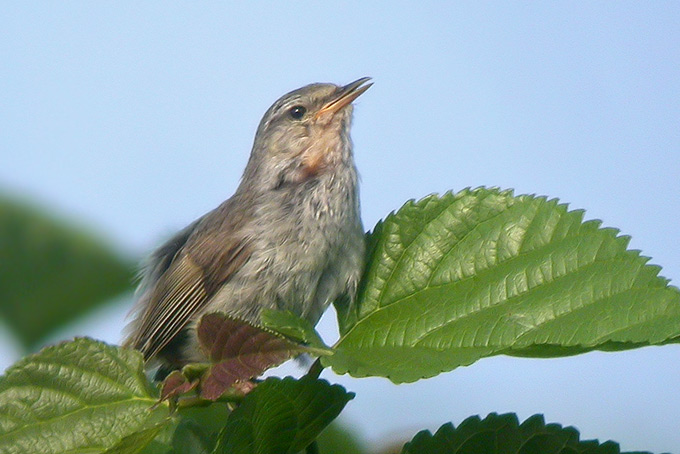
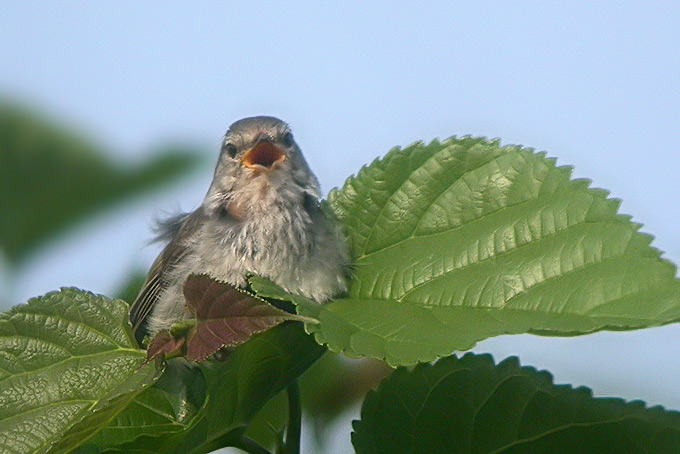

Uiryoung, July 9
After clouds and rain for a few days I chose a fine sunny afternoon for a walk along the small river at Uiryoung.Oriental Dollarbirds hunted insects above the trees, and at a lower tree level I glimpsed a fine male Black-Naped Oriole also feeding. Varied, Great and Coal Tits foraged low down along the far bank, together with a Eurasian Jay. Grey Herons and Little Egrets from the large heronry nearby found plenty of fish. As I was watching four beautiful large white butterflies, out of the corner of my eye I spotted a Water Deer as it came to drink from the river. It slunk off discreetly. A moment later I found what I had been hoping for, a Common Kingfisher. Some 20-25 metres away, this adult male let me watch his activity for 20 minutes, including some five or six dives where he didn't catch fish. One shallow dive managed to remove a burr stuck to his tail. He finally caught a good fish, bashed it on a rock, swallowed it head first and then, having dived once more (to clean his bill?), he flew away upstream. All this activity while four or five ladies filled their pails with shellfish just meters downstream - it was a privilege to walk along such an interesting stream.
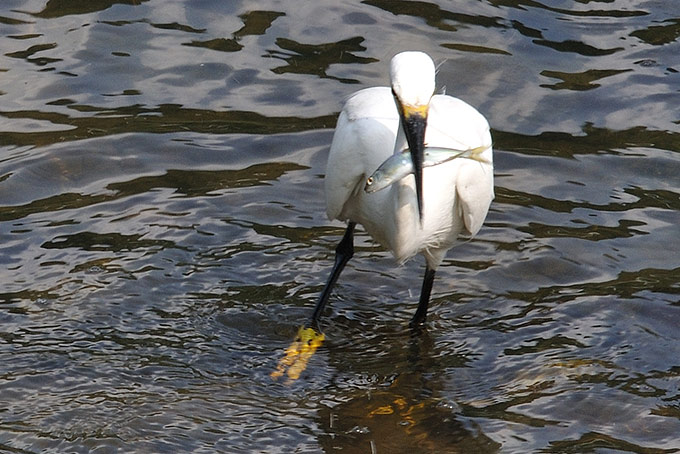
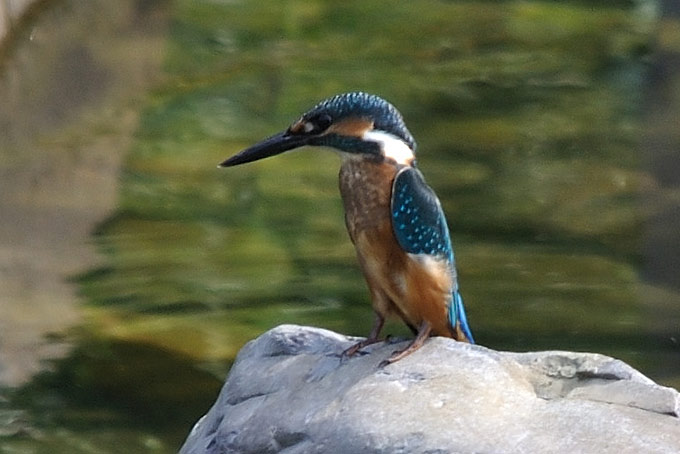
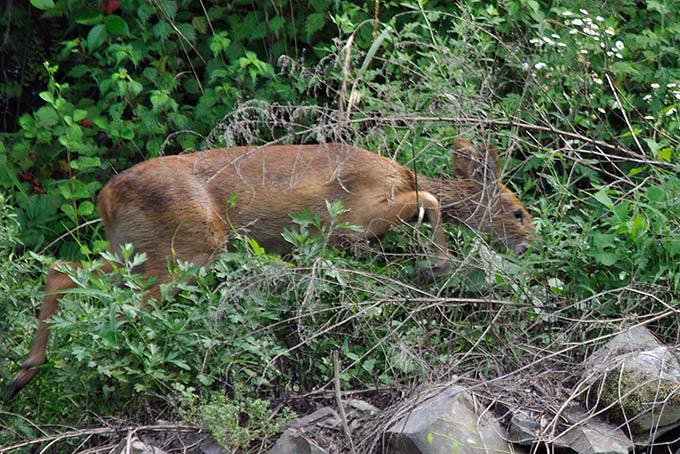
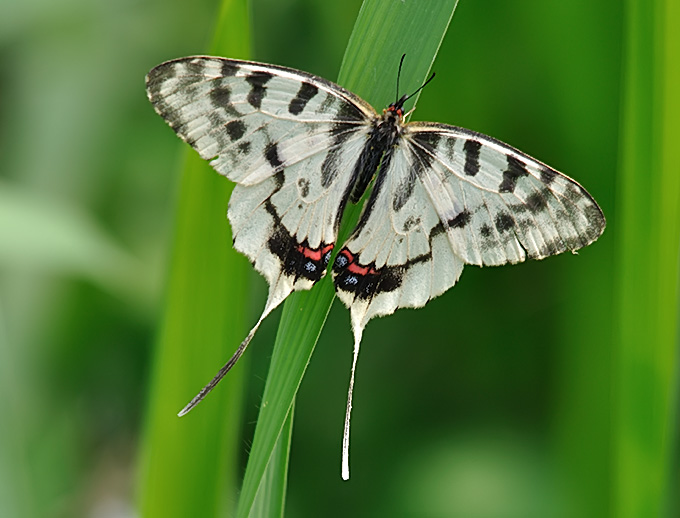
Weiyeon Island, June 29 - July 2
In mostly foggy and overcast conditions (leading to several days without a boat..), thirty-four species found in total during the Birds Korea Blueprint Survey on Weiyeon Island.
Including several interesting breeders and over-summerers and a few early autumn migrants. Most surprising were two "pure" flocks of Short-tailed Shearwater totalling 65 individuals from the ferry ca 3km offshore, followed by 110 in a single raft seen from the island itself. This exceptionally high number for Korean waters follows on from a record of over 1000 seen off Mara Do (Jeju) photographed by local birders several weeks ago. Other species of note on Weiyeon included a single Red-breasted Merganser, singing Meadow Bunting (one or two), both singing Korean (3) and Japanese Bush Warblers (24), probably five Lesser Cuckoo, one or two Black Paradise Flycatcher, single Terek Sandpiper and Little Ringed Plover and 60 White-cheeked Starling, while the most numerous breeding bird appeared to be Pale Thrush - with over 30 singers, and several family parties made up of both adults and young juveniles. Despite the apparently suitable habitat and the close proximity to islands and islets used by the species (e.g. Eocheong and islets off Yubu), only one Styan's Grasshopper Warbler was found - a bird that gave only a single trill from dense cover before falling silent again.
Although a few km "inland" of Eocheong it is clear from this visit (personal last was in Spring 2007) why Weiyeon is now preferred by most birders. Unlike Eocheong, away from the very noisy and degraded harbor, there are grass tracks, stone-floored pathways above the shore and several boardwalks running through excellent habitat - including dense broadleaved evergreen forest, open grassland, bamboo stands, and a couple of heavily vegetated streams and wetlands.
